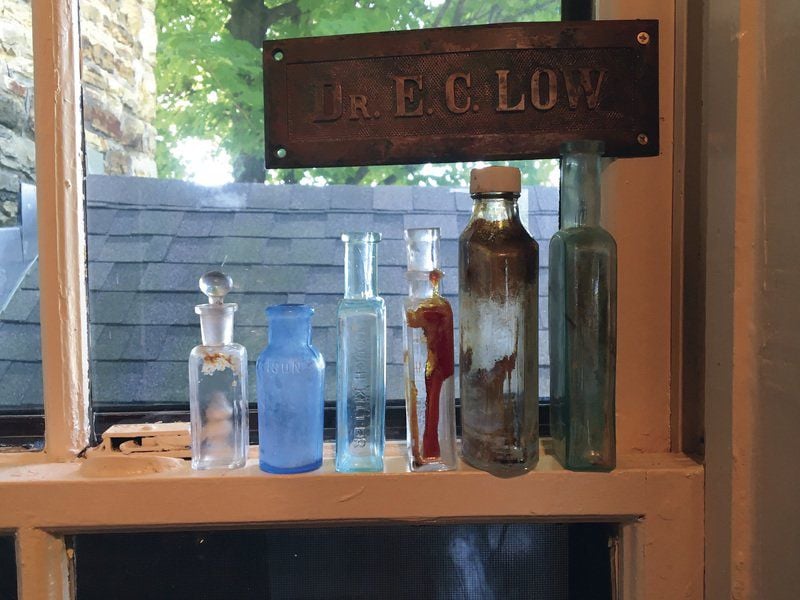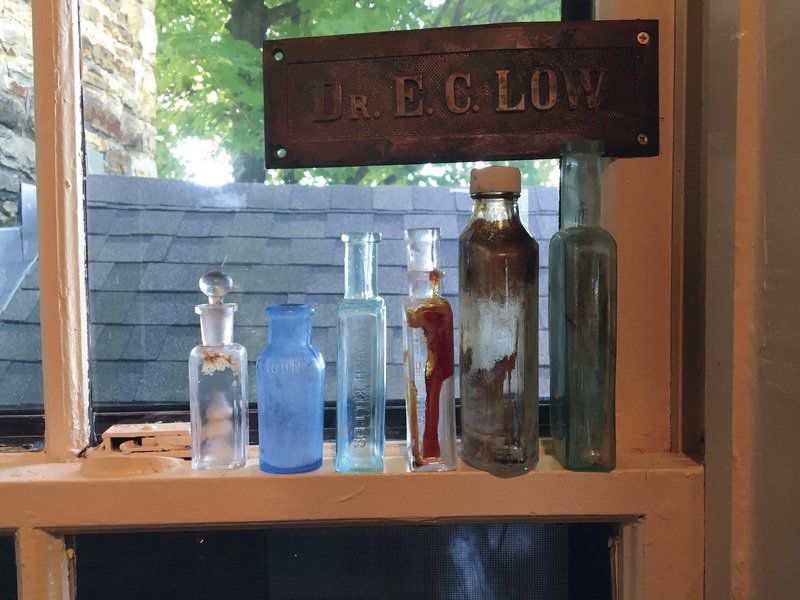
Connie Mandeville’s visit home included a stop at the North Star Underground Railroad Museum at Ausable Chasm.
The 2008 Peru Central School alum is a graduate student in public history at the University of South Carolina.
“I wanted to come here to see what they have been doing with the museum, and I think this is a great way for them to connect it to modern issues and current events,” said Mandeville, who has a concentration in museums.
“I’m very impressed with what they have done.”
“Breaking Slavery’s Chains” is one of three new exhibits at the museum she viewed.
The traveling exhibit was conceived by Linda Richardson, a former board member that chaired a committee.
“Linda and our president Jackie Madison both felt that we needed to address the issue of modern-day slavery,” said Don Papson, founder for the museum and past association president.
He presents a talk at 10 a.m. today at the Unitarian Universalist Fellowship, 4 Palmer St., in Plattsburgh.
“Linda met with a group of people and they did a lot of research, and they had a lot of notes. There were grants obtained from Stewart’s Shops and also from the Adirondack Foundation. The idea behind this is that it’s a traveling exhibit that can very easily be taken to another museum or to a library or to another organization that would like to help address this issue.”
TRAFFICKING
More than 35 million people are enslaved around the world today.
“It’s very convenient, and you can fold it right up and carry it like a suitcase. It only takes a few minutes to set up. It can be used for stimulating discussions and for helping people get involved, identifying people who are enslaved and helping them or to, bottom-line, buy fair-trade items so that people who are creating things can sustain themselves with a livable wage.”
When the museum first opened, it only addressed past slavery in these United States.
“In the last three years, there has been a lot of attention to the fact that slavery is outlawed all over the world but it still exists,” Papson said.
“There are more people enslaved in the world than ever. I notice that young people come in and they immediately gravitate to this. They like the display very much. Dan Ferguson was the designer for us, and he did a great job.”
Papson took the committee’s research and figured out a workable format for the exhibit.
“It also told the story of Gordon,” he said. “We have all seen the image of Gordon’s horribly lacerated back but most of us don’t know that image is from when he was examined by a medical officer for the Union Army. He joined the Union Army regiment. We have him in his clothing when he was enslaved, and we also have him in his uniform.”
HOMEGROWN ABOLITIONIST
The first panel includes an Adirondack recollection that appeared under “Local Correspondence” in the Plattsburgh Sentinel on July 18, 1890.
“It’s from a man who was telling his experience as a little boy,” Papson said.
“It’s an anonymous story. He doesn’t identify who he is. He says that when he was a small boy, a man from the Underground Railroad came to his father’s house and showed him his lacerated back. From that moment, he was the blackest kind of abolitionist. I wish we knew his name. Perhaps one day we will know who he was.”
DIGGING UP DIRT
Another new exhibit is an artifact display in a rear window from three local properties.
“The Stephen Keese Smith property, from the Ira Rowlson House that is owned by Dr. Palmer, and the Arthur House on Ausable Street,” Papson said.
“This is to show places that have been investigated that are alleged sites on the Underground Railroad.”
There are two plaques that define what the Underground Railroad was/is and also an example of John W. Jones’s “Confederate Currency: The Color of Money” exhibit.
A horseshoe has been placed above the Estes House panel to honor Herbert Estes, who built the house and was the superintendent of the Ausable Horse Nail Works, which was located right above the waterfall.
LET FREEDOM RING
A black bell peals throughout the day at the museum’s entrance.
“This is an idea I had from the very beginning, I wanted a bell,” Papson said.
“But I didn’t want a bell that was just sitting. I wanted it interactive. This is something that engages people before they actually get into the museum. We encourage people to ring it for freedom because we have a panel on Samuel R. Ward, who had to escape from the United States and get to Canada in 1851 because he, Gerrit Smith and other men had rescued William ‘Jerry’ Henry from the jail in Syracuse.”
When Henry was arrested by the U.S. Marshals, all of the church bells rang as a signal that someone needed help.
“They rescued him,” Papson said. “They broke down the jailhouse door. They actually took him to a home and the only people there were two children. They tried to get the leg irons off but they couldn’t do it. They were able to get a blacksmith to get the leg irons off.”
Henry fled to freedom “under the lion’s paw,” and so did Ward since there was a warrant out for his arrest.
“He came on Lake Champlain,” Papson said.
“He was given a cabin on the Francis Saltus steamboat. He wrote to a friend in Toronto and said he was treated well. This is one reason we have the bell.”
FOR WHOM THE BELL TOLLS
Abolitionist martyr John Brown’s execution is another reason for the bell.
“When was hanged for treason for Harpers Ferry for the raid on the arsenal there, his body was brought back north to the Adirondacks for burial,” Papson said.
“Church bells were run on the train route back. We couldn’t afford a brass bell, so we have a cast-iron bell from a school in Vermont. Everybody loves the bell, especially the kids.”
[Source:- Press r epublican]




